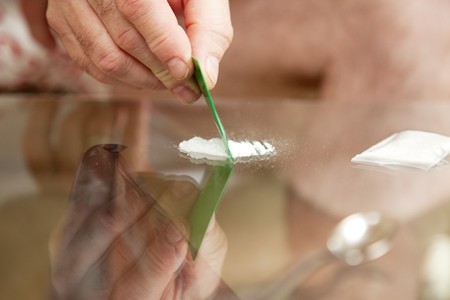Topiramate Plus Antipsychotic Medication Better Than Antipsychotics Alone for Schizophrenia Spectrum Disorders
 A 2016 meta-analysis has shown that the combination of the anticonvulsant topiramate and antipsychotic medication reduces symptoms of schizophrenia spectrum disorders more than antipsychotic medication alone. Researchers led by Christoph U. Correll analyzed the results of eight studies in which the topiramate-antipsychotic combination was compared to antipsychotics alone or with placebo.
A 2016 meta-analysis has shown that the combination of the anticonvulsant topiramate and antipsychotic medication reduces symptoms of schizophrenia spectrum disorders more than antipsychotic medication alone. Researchers led by Christoph U. Correll analyzed the results of eight studies in which the topiramate-antipsychotic combination was compared to antipsychotics alone or with placebo.
The combination of topiramate and antipsychotic medication was superior at reducing general psychopathology, including both negative and positive symptoms of schizophrenia. The combination was also associated with lower body weight and body mass index (BMI) compared to antipsychotics alone.
The studies included in the meta-analysis used a variety of antipsychotic medications. When these were compared, the combination of topiramate and clozapine was more effective than other combinations at reducing psychopathology. However, the combination of topiramate and clozapine was also associated with less weight loss than combinations using other antipsychotics.
In terms of side effects, topiramate was associated with more paresthesia (a burning or prickling sensation, often in the hands or feet) than placebo.
The study was published in the Journal of Clinical Psychiatry.
FDA Approves Treatment for Tardive Dyskinesia
 A new drug valbenazine (trade name Ingrezza) has been approved by the US Food and Drug Administration for the treatment of tardive dyskinesia. Tardive dyskinesia, a side effect of long-term use of antipsychotic medication, consists of involuntary movements of the tongue, face, torso, arms, and legs. It can interfere with walking, talking, and breathing.
A new drug valbenazine (trade name Ingrezza) has been approved by the US Food and Drug Administration for the treatment of tardive dyskinesia. Tardive dyskinesia, a side effect of long-term use of antipsychotic medication, consists of involuntary movements of the tongue, face, torso, arms, and legs. It can interfere with walking, talking, and breathing.
The approval followed 20 clinical trials of valbenazine that included a total of more than 1000 participants who had symptoms of tardive dyskinesia in addition to schizophrenia, schizoaffective disorder, or bipolar disorder.
In a 2017 article in the American Journal of Psychiatry, researcher Robert A. Hauser and colleagues reported that patients who received 80 mg/day of valbenazine had a significant reduction in tardive dyskinesia symptoms after six weeks compared to those who received placebo. Participants who received 40 mg/day of valbenazine also had reductions in symptoms, although not as dramatic as with the higher dose.
Serious side effects of valbenazine include sleepiness and lengthening of the QT interval, which can increase heart arrhythmias. The FDA notes that people who already have abnormal heartbeats due to a long QT interval should not take valbenazine. In addition, people taking the drug should avoid driving or operating heavy machinery until they know how valbenazine affects them.
Levels of Amino Acid Proline Interact with COMT Genotype to Affect Negative Symptoms
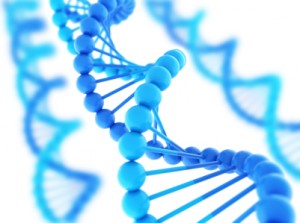 In a 2016 article, researcher Catherine L. Clelland and colleagues reported that a patient’s levels of the amino acid proline interact with their genetic profile to influence the seriousness of their negative symptoms. Negative symptoms of schizophrenia and bipolar disorder include flat affect and lack of volition and can be some of the hardest symptoms to treat.
In a 2016 article, researcher Catherine L. Clelland and colleagues reported that a patient’s levels of the amino acid proline interact with their genetic profile to influence the seriousness of their negative symptoms. Negative symptoms of schizophrenia and bipolar disorder include flat affect and lack of volition and can be some of the hardest symptoms to treat.
High levels of proline in the central nervous system have been linked to schizophrenia. Proline is a precursor to the neurotransmitter glutamate, and high proline levels have been found to alter glutamate and dopamine signaling in mice. This is one of the factors affecting negative symptoms.
The other factor affecting negative symptoms is the COMT gene. The enzyme catechol-o-methlyl transferase (COMT) metabolizes dopamine in the prefrontal cortex. There are several common versions of the gene for COMT. The most efficient is known as val-158-val, identifying that the gene has two valine amino acids at position 158. People with high proline levels and the val-158-val version of the COMT gene had fewer negative symptoms than people with high proline levels and another version of the gene, val-158-met (indicating one valine and one methionine amino acid at position 158).
Clelland and colleagues hypothesized that high proline levels may actually counteract the dopamine shortages common in the prefrontal cortex in people with the val-158-val genotype of COMT, which is more efficient at breaking down dopamine in this region.
The mood stabilizer valproate increases proline levels. In the study, which was published in Translational Psychiatry, people with schizophrenia and the val-val genotype had fewer negative symptoms when treated with valproate than those with the val-met genotype who received the same treatment.
Lithium Responders and Non-Responders Have Different Neuron Characteristics
After hyperpolarization (via Wikimedia Commons)
A 2017 study in the journal Molecular Psychiatry suggests that by observing the neurons of a person with bipolar disorder, you can predict whether they will respond to lithium treatment. The drug is effective in approximately 30% of those to whom it is prescribed.
Researchers led by Shani Stern and Renata Santos used stem cell research to analyze neurons from people with bipolar disorder and healthy controls.
People with bipolar disorder shared some neuron features, namely a large, fast after-hyperpolarization (a phase in which the cell’s membrane changes), which is followed by a resting period before the neuron can fire again. The large, fast hyperpolarization in people with bipolar disorder speeds up this cycle, leading to fast and sustained neuron firing. This replicated previous findings by the same researchers, which found that people with bipolar disorder are more sensitive to stimuli. In people with bipolar disorder, the threshold for a neuron to fire drops with each subsequent after-hyperpolarization.
Chronic lithium treatment reduced this hyperexcitability in some patients—and these were the patients who had a good response to lithium treatment.
Among the study participants with bipolar disorder, there were differences in the neuron profiles of those who responded well to lithium versus those who did not.
Stern and colleagues programmed a computer to recognize the electrophysiological features of neurons from lithium responders and non-responders. The computer could then analyze the neurons of a patient whose response to lithium was unknown and predict with a greater than 92% success rate whether that patient had responded well to lithium treatment.
Weight Loss Drug Lorcaserin Cuts Opiate Use in Rats
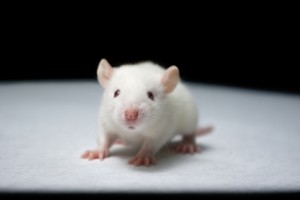 Lorcaserin is a drug approved for weight loss in very obese patients. It stimulates serotonin 5 HT-2c receptors thought to control appetite by inducing the secretion of the polypeptide pro-opiomelanocortin. In a 2017 article in the journal ACS Chemical Neuroscience, researcher Kathryn Cunningham and colleagues reported that the drug had reduced opiate use and craving in rats. Previous research by Cunningham showed that lorcaserin reduced cocaine seeking in rats.
Lorcaserin is a drug approved for weight loss in very obese patients. It stimulates serotonin 5 HT-2c receptors thought to control appetite by inducing the secretion of the polypeptide pro-opiomelanocortin. In a 2017 article in the journal ACS Chemical Neuroscience, researcher Kathryn Cunningham and colleagues reported that the drug had reduced opiate use and craving in rats. Previous research by Cunningham showed that lorcaserin reduced cocaine seeking in rats.
Most treatments for opiate addiction work by occupying opiate receptors so that opiates are prevented from stimulating them, thus reducing the pleasurable effects of the opiates. It is not yet well understood how drugs like lorcaserin that target serotonin 5 HT-2c receptors affect the brain’s reward system.
In the study, rats were trained to self-administer oxycodone. They were also trained to associate certain lights and sounds with oxycodone availability. Lorcaserin reduced the rats’ drug-seeking behavior and also weakened the link between the light and sound cues and the drug-seeking behavior.
Future research may explore whether drugs like lorcaserin can reduce opiate use in people.
Currently, there are a few options to treat opiate addiction. N-acetylcysteine (NAC) is an over-the- counter (nonprescription) drug that has been shown to decrease opiate use in both animals and humans. NAC also decreases use or craving for many other drugs of abuse including cocaine, alcohol, nicotine, and marijuana. NAC reduces the excitatory glutamate signal in the reward area of the brain (the nucleus accumbens) by increasing the number of transporters carrying glutamate out of the synapse and into glial cells. It has an excellent side effects profile and can readily be used in opiate-addicted patients.
Opiate replacement therapy with methadone or the partial opiate agonist buprenorphine is one treatment option for opiate addiction. Buprenorphine is also combined with the opiate antagonist naloxone in a drug called Suboxone, which can reduce opiate use. Naloxone is a pure opiate antagonist that can rapidly reverse the respiratory-suppressing effects of an overdose of opiates.
Disrupting Memories of Cocaine Use Might Prevent Relapse
Cocaine users who want to abstain from the drug may find that encountering people or places who remind them of past cocaine use can increase their cravings for the drug and lead to relapse. Researchers are studying animals to see if disrupting the link between an environmental cue and the memory of cocaine’s effects could reduce cravings for the drug.
In a 2016 article in the journal Neuropsychopharmacology, researcher Melissa S. Monsey and colleagues reported that in rats, the amnesia-causing natural compound garcinol can weaken the cues that lead to a cocaine-seeking. Garcinol is derived from the rind of kokum (or Garcinia indica) fruit, which is native to the west coast of India.
Monsey and colleagues delivered the garcinol during a period when the rats’ brains were reconsolidating memories that linked an environmental cue with the pleasurable effects of cocaine.
For 12 days, the rats in the study could press a lever and receive an intravenous infusion of cocaine that was paired with a light and a sound. Then the lever stopped working for 8 days. Next, the researchers observed how the rats behaved when the light and sound returned.
The light and sound were meant to remind the rats of the previous times they received cocaine, prompting their brains to reconsolidate the memory linking the light/sound with the pleasurable effects of cocaine.
Half of the rats were given an injection of garcinol during this memory reconsolidation period. While all of the rats continued to seek out cocaine, in the garcinol-treated rats, the light/sound was no longer linked to cocaine. Their cocaine-seeking behavior from then on was unrelated to the light/sound, and the link between the light/sound and cocaine could not be reinstated in these rats.
This research on rats may help clarify how cravings are produced in the brain, and how they might be prevented or treated.
Editor’s Note: In 2012, Yan-Xue Xue and colleagues reported in the journal Science that in humans, psychological techniques can be used to help a patient unlearn the association between an environmental cue and the effects of a drug, using the same theory of the memory reconsolidation period. When patients in recovery from heroin addiction were prompted to revisit memories of heroin use 10 minutes before extinction training (in which they looked at heroin or heroin paraphernalia without receiving the drug), they ended up with fewer cravings for heroin 1, 30, and 180 days later compared to patients who did extinction training without revisiting memories of past heroin use (and thus without opening the memory reconsolidation window, which researchers believe opens 5 minutes to an hour after someone engages in active recall).
Overdoses Possible on Synthetic Marijuana
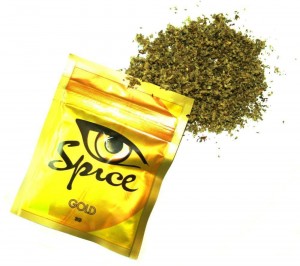 Several states have reported upticks in overdoses from synthetic marijuana over the past few years. Synthetic marijuana, sometimes called “spice” and sold under descriptors such as “botanical incense,” consists of man-made chemicals that are sprayed on plant matter and smoked, or sold as liquids to be consumed via e-cigarettes. Monitoring the Future, an ongoing survey of teen drug use in the US, reported in 2016 that 3.5% of high school seniors had used synthetic marijuana in the past year. The risks of the drug are not yet well known, since the chemicals used may vary from batch to batch.
Several states have reported upticks in overdoses from synthetic marijuana over the past few years. Synthetic marijuana, sometimes called “spice” and sold under descriptors such as “botanical incense,” consists of man-made chemicals that are sprayed on plant matter and smoked, or sold as liquids to be consumed via e-cigarettes. Monitoring the Future, an ongoing survey of teen drug use in the US, reported in 2016 that 3.5% of high school seniors had used synthetic marijuana in the past year. The risks of the drug are not yet well known, since the chemicals used may vary from batch to batch.
A case series published in the Western Journal of Emergency Medicine in 2016 described 11 cases of patients who received emergency room treatment for an overdose of the synthetic cannabinoid MAB-CHMINACA. According to the Drug Enforcement Agency, MAB-CHMINACA can cause severe toxicity, seizures, excited delirium, cardiotoxicity and death.
Kenneth D. Katz and colleagues reported that all 11 patients required sedation, while nine required intubation to provide respiratory support. Three of the 11 patients had seizures, and one suffered from hyperthermia (increased body temperature). One patient died as a result of decreased oxygen to the brain and rhabdomyolysis, a condition in which muscles break down and release toxins, shutting down the kidneys. Many of the 11 were children or adolescents.
Katz and colleageus stress that synthetic cannabinoid use is a public health crisis, and that emergency rooms should be prepared to provide aggressive sedation and respiratory support to people overdosing on MAB-CHMINACA.
Editor’s Note: ‘Spice’ is not only more potent than marijuana but also lacks the cannabinoids that are responsible for the beneficial effects of marijuana.
Decriminalization of Marijuana Linked to Lower Educational Attainment
As more states pass laws allowing the use of medical marijuana, and some are decriminalizing recreational marijuana use, researchers are examining possible negative consequences of loosening these drug policies. Researcher Andrew Plunk and colleagues reported in a 2016 issue of the journal Drug and Alcohol Dependence that states where medical marijuana has been legalized have seen dropout rates increase among high school seniors. Educational attainment after high school has decreased as well.
Plunk stressed that while policies that allow medical marijuana and decriminalize recreational marijuana use may have benefits, it is also important to study any possible negative consequences of these policies. He compared marijuana to alcohol and cigarettes, substances that are legal for adults to use but also negatively impact users’ health. Plunk told Medscape Medical News that as marijuana gets approved for medical uses, kids may begin to see the drug as less risky.
Plunk and colleagues used datasets from the US Census and the American Community Survey from 1990 to 2012, which included a total of 5,483,715 people of high school age. Compared to young people in states with no legalized marijuana policies, those in states with medical marijuana had a 0.40 percentage point increase in the probability they would not receive a high school diploma or GED.
Living in a state with medical marijuana was also linked to a 1.84 percentage point increase in the probability of not enrolling in college, and a 0.85 percentage point increase in the probability of not getting a college degree.
While medical marijuana is not prescribed to minors, Plunk and colleagues believe it is easier for adolescents in states where medical marijuana is available to access marijuana that has been prescribed to adults.
Editor’s Note: Heavy marijuana use comes with risks such as doubling of the likelihood of psychosis, hastening the onset of schizophrenia and bipolar disorder, increasing cognitive impairment, and changing brain structure.
Early Marijuana Use Linked To Abnormal Brain Function, Low IQ
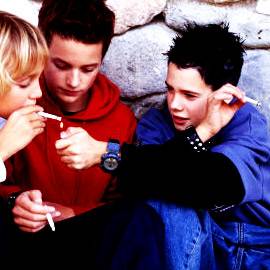 A study of depression and marijuana use found that using marijuana before the age of 17 was linked to abnormal brain function and lower IQ. In a 2016 article in the journal Acta Psychiatrica Scandinavica, researcher Elizabeth Osuch and colleagues described a study that compared four categories of youth: frequent pot users with depression, frequent pot users without depression, those with depression who did not use pot, and healthy individuals who did not use pot. The researchers also compared those who began using pot after the age of 17 to those who began earlier.
A study of depression and marijuana use found that using marijuana before the age of 17 was linked to abnormal brain function and lower IQ. In a 2016 article in the journal Acta Psychiatrica Scandinavica, researcher Elizabeth Osuch and colleagues described a study that compared four categories of youth: frequent pot users with depression, frequent pot users without depression, those with depression who did not use pot, and healthy individuals who did not use pot. The researchers also compared those who began using pot after the age of 17 to those who began earlier.
The main findings were that brain function in the areas of reward processing and motor control differed across the four groups. Depression was linked to deficits in brain function. Marijuana use did not correct these deficits, and in some parts of the brain, worsened them.
Those who had used marijuana before the age of 17 had abnormalities in memory, visuo-spatial processing, self-referential activity, and reward processing. Those who had started using marijuana at younger ages also had lower IQ scores.
National Academy of Sciences, Engineering and Medicine Issues Report on the Health Effects of Cannabis
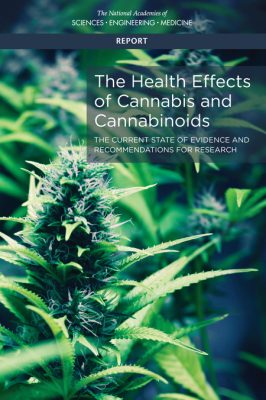 In early 2017, the National Academy of Sciences, Engineering, and Medicine issued its first comprehensive report on cannabis since 1999. Shifting public opinion over the past few decades has led to 28 states and the District of Columbia legalizing medical uses of marijuana, and eight states and DC legalizing recreational marijuana use. The Health Effects of Cannabis and Cannabinoids: Current State of Evidence and Recommendations for Research is intended to address the lack of accepted standards to guide individuals in deciding whether and how to use cannabis safely. In addition to summarizing recent health-related findings on cannabis, the report also offers recommendations to guide future research.
In early 2017, the National Academy of Sciences, Engineering, and Medicine issued its first comprehensive report on cannabis since 1999. Shifting public opinion over the past few decades has led to 28 states and the District of Columbia legalizing medical uses of marijuana, and eight states and DC legalizing recreational marijuana use. The Health Effects of Cannabis and Cannabinoids: Current State of Evidence and Recommendations for Research is intended to address the lack of accepted standards to guide individuals in deciding whether and how to use cannabis safely. In addition to summarizing recent health-related findings on cannabis, the report also offers recommendations to guide future research.
The report shares findings about possible therapeutic benefits to cannabis use as well as health impacts relating to areas such as cancer, respiratory disease, immunity, pre- and post-natal health.
There were several notable findings with regard to mental health. The committee that issued the report found substantial evidence of a statistical association between cannabis use and the development of schizophrenia or other psychoses, with the highest risk among the most frequent users.
The committee also found moderate evidence of a link between cannabis use and increased symptoms of mania and hypomania in people with bipolar disorder who use cannabis regularly. The report also describes moderate evidence of an association between heavy cannabis use and increased suicidal ideation and suicide attempts.
There was also moderate evidence that regular cannabis use is linked to social anxiety disorder.
The report described factors that may lead to problem cannabis use. The committee found substantial evidence that being male, smoking cigarettes, and beginning cannabis use at an earlier age are risk factors for developing problem cannabis use. Read more

